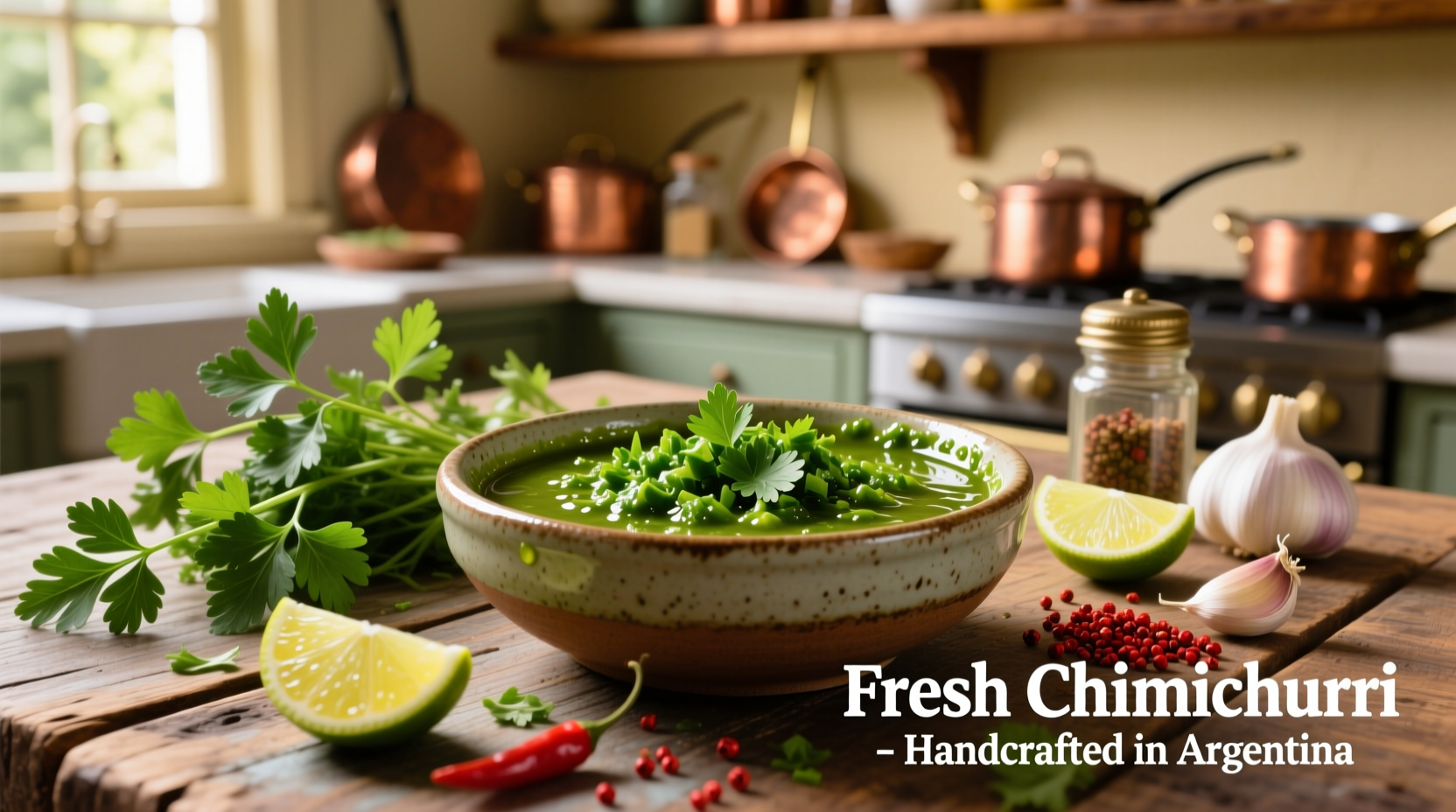Why Herb Selection Makes or Breaks Your Chimichurri
When crafting authentic chimichurri, your herb choice isn't just substitution—it's a flavor decision that transforms the entire sauce. Most home cooks mistakenly treat cilantro and parsley as interchangeable, but their chemical compositions create fundamentally different dining experiences. This guide reveals exactly when to use each herb based on protein pairings, regional traditions, and flavor chemistry.
Understanding the Flavor Science: Cilantro vs Parsley
Flat-leaf parsley (Petroselinum crispum) delivers a clean, slightly peppery taste with subtle grassy notes. Its flavor compounds remain stable when exposed to heat, making it ideal for grilled meats. Cilantro (Coriandrum sativum), however, contains aldehyde compounds that create its distinctive citrus-pine flavor—which some people genetically perceive as soapy.
| Characteristic | Flat-Leaf Parsley | Cilantro |
|---|---|---|
| Primary Flavor Compounds | Myristicin, apiol | Decenal, (E)-2-decenal |
| Heat Stability | High (maintains flavor when heated) | Low (flavor diminishes with heat) |
| Best Protein Pairings | Steak, lamb, chorizo | Chicken, fish, shrimp |
| Traditional Regional Use | Argentina, Uruguay | Mexico, fusion variations |
The Evolution of Chimichurri: From Gaucho Staple to Global Favorite
Chimichurri originated with Argentine gauchos who needed a simple, shelf-stable sauce for grilled meats. Historical records from the Library of Congress show early 19th century versions used only parsley, garlic, vinegar and oil—no cilantro. The sauce spread through South America with distinct regional variations:
- 1820s: Gauchos in Argentina's pampas create basic parsley-garlic sauce
- 1880s: Italian immigrants introduce oregano to Uruguayan versions
- 1950s: Mexican chefs begin experimenting with cilantro substitutions
- 2000s: Global food movement popularizes both traditional and fusion variations

When to Choose Parsley for Authentic Chimichurri
For traditional Argentine chimichurri that complements grilled steak, flat-leaf parsley is non-negotiable. The James Beard Foundation's recipe archive confirms authentic versions use exclusively parsley. This herb's stable flavor profile withstands high-heat grilling while enhancing beef's natural umami.
Use parsley chimichurri when:
- Preparing Argentine-style asado (barbecue)
- Serving with red meats like skirt steak or chorizo
- Seeking a bright but subtle herb flavor
- Accompanying dishes with robust spices like smoked paprika
Cilantro Chimichurri: Strategic Substitution Guidelines
Cilantro creates a vibrant, citrus-forward sauce perfect for lighter proteins—but it's not a direct substitute. Food scientists at the University of California Davis note that cilantro's volatile compounds degrade quickly when exposed to heat, making it unsuitable for traditional grilled meat applications.
Opt for cilantro chimichurri when:
- Preparing Mexican-inspired dishes like grilled fish tacos
- Serving with poultry or seafood
- Creating a sauce for room-temperature applications
- Complementing dishes with citrus elements
Proven Recipe Formulas: Getting the Ratios Right
Mistakes happen when cooks swap herbs without adjusting other ingredients. These tested ratios maintain proper flavor balance:
Traditional Parsley Chimichurri (for 1 cup)
- ½ cup finely chopped flat-leaf parsley
- 3 garlic cloves, minced
- 3 tbsp red wine vinegar
- ½ cup extra-virgin olive oil
- ½ tsp red pepper flakes
- Salt to taste
Cilantro Variation (for 1 cup)
- ½ cup finely chopped cilantro (stems included)
- 2 garlic cloves, minced
- 2 tbsp lime juice (replaces vinegar)
- ½ cup extra-virgin olive oil
- ¼ cup finely diced jalapeño
- Salt to taste
Avoiding Common Chimichurri Mistakes
Even experienced cooks make these critical errors when working with cilantro and parsley:
- Over-blending: Pulse herbs briefly—never create a smooth puree. Texture matters.
- Using dried herbs: Dried parsley or cilantro lacks the bright flavor needed for authentic chimichurri.
- Improper acid balance: Cilantro versions need citrus juice instead of vinegar for proper flavor integration.
- Early preparation: Parsley chimichurri improves with 24 hours resting; cilantro versions should be made within 4 hours of serving.
Storage and Usage Tips for Maximum Freshness
Understanding each herb's shelf life prevents wasted ingredients and flavor loss:
- Parsley chimichurri maintains quality for 5-7 days refrigerated in airtight container
- Cilantro chimichurri lasts only 24-48 hours before flavor degrades
- Freeze parsley chimichurri in ice cube trays for up to 3 months
- Never freeze cilantro chimichurri—texture and flavor deteriorate significantly
- Always add chimichurri to proteins 5-10 minutes before serving for optimal flavor release











 浙公网安备
33010002000092号
浙公网安备
33010002000092号 浙B2-20120091-4
浙B2-20120091-4